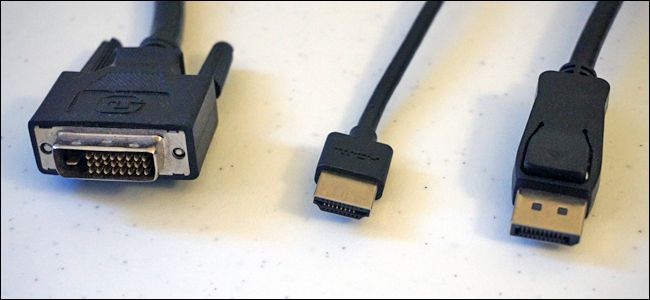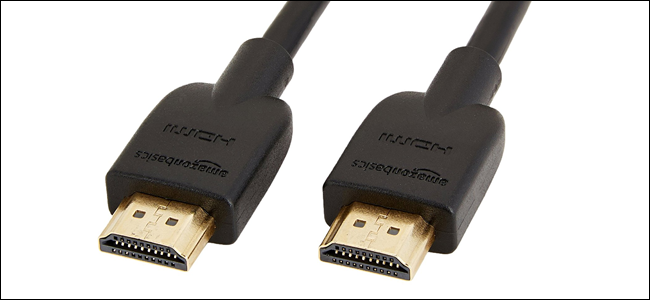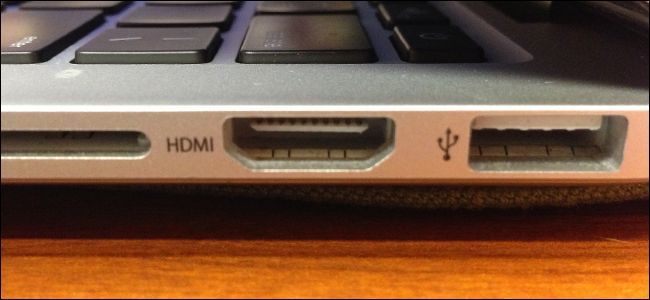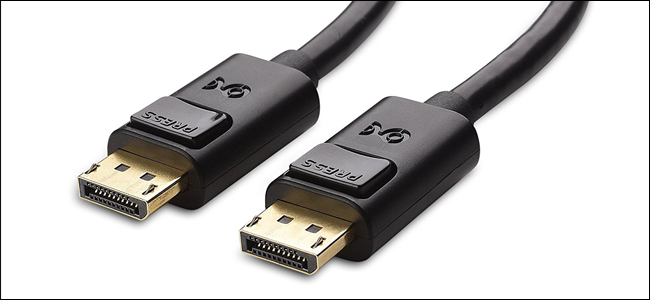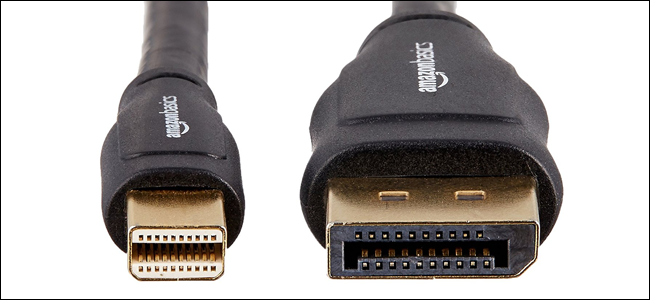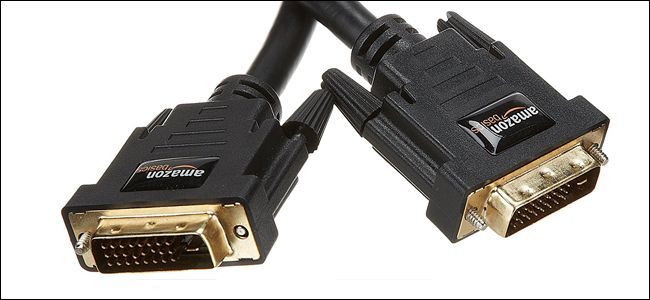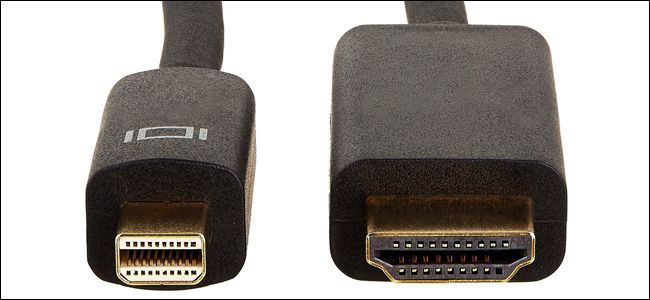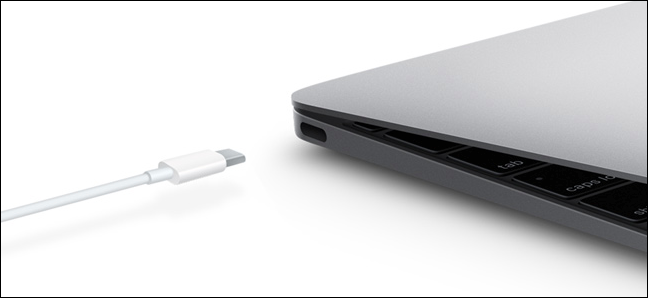It doesn't seem so long ago that we had only one reliable way to connect a computer to an external monitor. Now the good old VGA port, may it rest in peace, is only found on designated "business" machines and adapters. In its place, we have a variety of alternatives, all of which seem to be fighting each other for the limited space on your laptop or graphics card. Let's break down the options for your next PC purchase.
HDMI
HDMI is the most widely-used of the three options here, if only because it's the de facto standard for anything connecting to televisions. Because of its wide adoption, HDMI is also included on most recent monitors and many laptops, except for the smallest ultraportable models. The acronym stands for "High Definition Multimedia Interface."
The standard has been around since the early 2000s, but determining its capabilities is a bit tricky, because it's gone through so many revisions. The latest release is HDMI 2.1, which supports a staggering 10K resolution (more than 10,000 pixels wide) at 120 hertz. But version 2.1 is just starting to appear in consumer electronics; the latest laptops that feature HDMI ports will probably top out at version 2.0b, which supports 4K video at 60 frames per second with high dynamic range (HDR).
HDMI's biggest advantage over the older DVI standard is that it also carries and audio signal, allowing users to plug into a TV (or a monitor with built-in speakers) with a single cable. This is great for TVs, but most monitors still lack integrated speakers, so you'll also have to use a more conventional headphone jack or simply rely on your laptop's built-in speakers much of the time.
HDMI comes in three primary connection sizes: standard, "Mini," and "Micro," getting progressively smaller. The Mini and Micro connections are popular with smaller portable electronics, but if your laptop has an HDMI port, it probably uses the full-sized version. This, combined with a wide variety of compatible monitors and televisions, makes HDMI the most convenient external display option for most users.
DisplayPort
DisplayPort is a bit newer than HDMI, though it's also a proprietary system. The full-sized plugs look similar, but DisplayPort uses a asymmetrical notched design versus HDMI's equal trapezoid.
As competing standards, they share a lot of features in their various incarnations. DisplayPort can also carry audio signals on a single cable, and the latest release supports up to 8K resolution at 60 hertz with high dynamic range. The next version is expected later this year.
Those who work with professional-quality monitors might have a very particular reason for preferring DisplayPort: it supports a unique feature called a daisy chaining. This allows users to plug one DisplayPort cable into a single monitor, then another from the first monitor to a second monitor, then a third, and so on. It allows a laptop or desktop to use a multi-display setup without needing to plug multiple cables into the source computer. Unfortunately, support for this feature is quite rare, and it's usually only found on high-end monitors.
DisplayPort plugs come in the full-sized "notched" variety and also a mini variant, first used with Apple laptops. Unlike the smaller HDMI plugs, Mini DisplayPort connections are quite common on high-end machines. The smaller plug allows computer manufacturers more flexibility, but it also means that end users need either a dedicated mini-to-standard cable or an adapter.
DVI
Digital Visual Interface is the oldest of these standards, first appearing in 1999, but it's still present on enough monitors that it's sometimes included even on new laptops and desktop graphics cards today. DVI's older technology gives it more limitations than either HDMI or DisplayPort. It also uses a much larger plug design that lacks a self-latching mechanism, and requires the user to screw in the cable for safe extended use.
The original single-link DVI is rarely used anymore: if your laptop has a DVI connection, it's almost certainly using DVI Dual Link, with a maximum 60 hertz output of 2560x1600. This makes DVI incompatible with newer 4K displays (though technically the standard can handle the higher number of pixels at a lower 33 frames per second). Some professional graphics cards have DVI-D ports that can output audio that's compatible with an HDMI adapter, but the vast majority of DVI ports are restricted to video-only capabilities.
As a visual standard, DVI is on its way out. If you're searching for a new laptop or building a new computer, you should only consider a DVI port essential if you need it to connect to an older (but still high-quality) monitor. Even then, it's quite easy to find DVI adapters for both HDMI and DisplayPort.
You Can Use Adapters, but They May Introduce Problems
A variety of adapters for managing different connections and cables are available, going to and from more or less all the plugs and standards listed above. So getting some kind of video out of your laptop or desktop and into a display shouldn't be an insurmountable challenge. However, due to the complexity of transitioning video and audio from one standard to another, these can cause problems. Converting the digital signal between standards typically means using the lowest maximum resolution and refresh rate between them, and single-cable audio may or may not be available.
In addition, converting the digital video signal may break HDCP content encryption, forcing some video sources to display in low-resolution mode or not at all. (Here's a primer on HDCP and the headaches it can cause for trying to watch high-definition video.) For this reason, it's always best to stick to the same type of cable and connection for your computer and your display if at all possible.
USB Type-C
Some new, high-end, or especially small machines are starting to rely on the Thunderbolt standard, which can operate on a flexible USB Type-C connector for video out, audio, data, and power, all at once. These multi-purpose ports are still rare on monitors, but the flexibility they offer is making them quite popular on laptops and tablets. Unfortunately, using one with most monitors and televisions at the moment will require yet another adapter.
Image Credits: Martin Gooden/Flickr, Amazon

